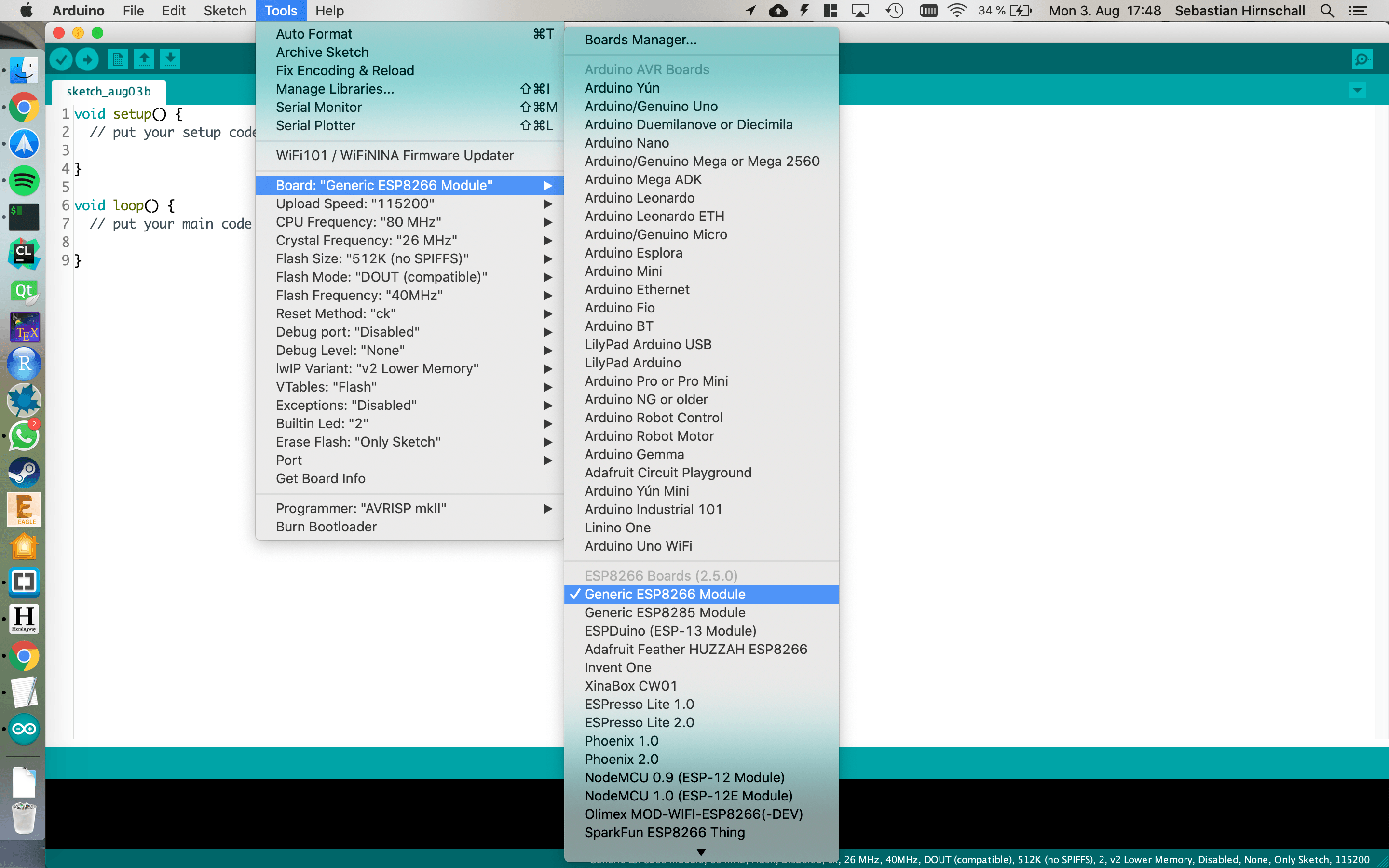

(This is GPIOY and not DY for the D to GPIO mapping, check your boards spec!)Ĭustom build for 4MB flash ESP8266 and APA102 LEDs (clock pin GPIO0, data GPIO2).Ĭustom build for 4MB flash ESP8266 and WS2801 LEDs (clock pin GPIO0, data GPIO2).Ĭustom build for ESP32 and WS2812b. Support will not be possible in future versions.Ĭustom build for 4MB flash ESP8266 and WS2812B. Interfaces (Alexa, Blynk, Hue sync, Infrared) disabled, no OTA. This binary has some interfaces disabled (Alexa, Blynk, Hue sync, Infrared) in order for wireless updates to continue working.ĮSP-01 (blue PCB), older Sonoff devices, all ESP8266 with 512kB flash. Legacy binary format (up to 0.11.1) Binary NameĮSP-01 (black PCB), most Sonoff devices, ESP8265, all ESP8266 with 1MB flash. To be flashed to a brand new ESP32 before flashing the WLED binary itself.

#Esp8266 arduino not connecting full
This binary has the full feature set, but wireless updates will not work. Also works with WiFi only.ĮSP-01 (black PCB), most Sonoff devices, ESP8265, all ESP8266 with 1MB flash. Still not running.' You didnt say exactly how you know it is not running.
#Esp8266 arduino not connecting Pc
Recommended.Īll ESP32 devices (try this if the WLED-AP doesn't appear after flashing)ĮSP32 devices with an Ethernet interface. USB cable to connect Arduino and PC As you see, theyre not that expensive plus theres no need to use a breadboard nor all those weird resistors and stuff like that. 1 Diagrams would help ('a picture is worth 1000 words.') but it seems like everything regarding the ESP8266 can be removed from your question because at the end, you say: 'I tried to run Arduino separately, without any other connections, but it not helped. NodeMCU, Wemos D1 mini, ESP-12, all ESP8266 with 4MB flash. Please use the following binary for these boards respectively: Binary Name Starting from WLED 0.12.0, pins can be configured in LED settings and specific binaries for different LED pins or types are no longer needed. I always recommend to use the latest release. If your device is already running a firmware with built-in OTA capability, you can probably use that as well. When complete the pins should be connected as follows (ESP8266 pin-out is shown for reference): ESP8266 TX -> Arduino UNO TX ESP8266 GND -> Breadboard GND ESP8266 CH-PD -> Breadboard 3. You can alternatively use my basic HTTP OTA updater sketch and upload the binary! This requires the Arduino IDE and ESP8266 core installed. Step 1: Wiring Wire the ESP8266 Module, the Arduino UNO, and the breadboard as seen in the image.

ESP8266 Flashing method 3: ESP Home Flasher toolįor ESP32 boards, you can use this WLED ESP Flasher instead of ESP Home Flasher.


 0 kommentar(er)
0 kommentar(er)
